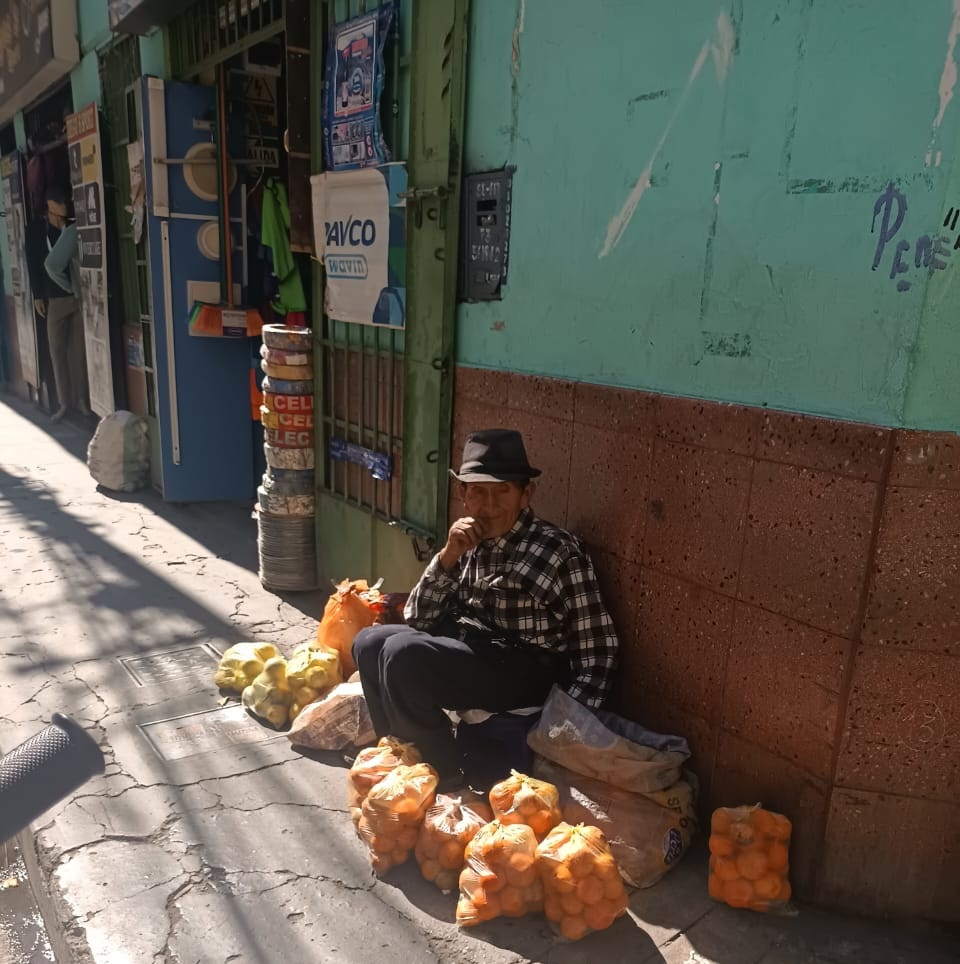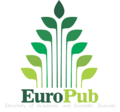Financial inclusion and poverty levels in the Department of Huanuco, Peru, 2025
DOI:
https://doi.org/10.37711/rcie.2025.5.2.1Keywords:
study, design, models, analysis of variance, econometricAbstract
Objective. To determine the relation among the levels of financial inclusion and poverty in the Department of Huanuco, Peru, 2025. Methods. This research had a quantitative approach and a non-experimental design, with an explanatory, longitudinal or evolutionary level. Since the research was conducted with secondary data, it was not necessary to determine a representative sample. Data related to financial inclusion were extracted from the database of the Superintendencia de Banca, Seguros y AFP, while poverty data were extracted from the Instituto Nacional de Estadística e Informática during the study period. Results. High levels of financial inclusion were found to be inversely related to poverty levels in the Department of Huánuco; furthermore, the explanatory variables regarding access to credit (AC), banking penetration ratio (BAN) and microfinance intermediation ratio (INT) in both models explained 96% of the endogenous variable, poverty levels (monetary poverty [MP] and unsatisfied basic needs [INT]). Conclusions. The signs of the coefficients estimated by the model are in accordance with the signs indicated by economic theory (negative relationship between the three exogenous variables and the endogenous variable); with respect to the relationship between the variables financial inclusion and poverty, when the variables AC, BAN, INT increase by one unit; on the other hand, PM and NBI decrease inversely by -6.127, -0.031, -0.1108, respectively.
Downloads
References
Aguirre, C. J. (2010). Bancarización, Intermediación Financiera y Nivel de Actividad Económica: Un Estudio Econométrico para la Región Huánuco, Período 2001-2008 [Tesis de pregrado, Universidad Nacional Hermilio Valdizán]. Repositorio Institucional UNHEVAL. https://hdl.handle.net/20.500.13080/5471
Aparicio, C., y Jaramillo, M. (2012). Determinantes de la inclusión financiera: ¿Cómo hacer que el Perú alcance los mejores estándares a nivel internacional? (Documento de Trabajo 04-2012). Superintendencia de Banca, Seguros y Administradoras Privadas de Fondos de Pensiones. https://www.sbs.gob.pe/Portals/0/jer/ddt_ano2012/DT-4-2012_Aparicio_Jaramillo.pdf
Banco Mundial. (2018). Inclusión financiera. https://www.bancomundial.org/es/ topic/financialinclusion/overview
Banco Central de Reserva del Perú. (2018). Reporte de Estabilidad Financiera. https://www.bcrp.gob.pe/docs/Publicaciones/Reporte-Estabilidad-Financiera/ref-noviembre-2018.pdf
Beck, T., Demirgüç-Kunt, A., & Levine, R. (2007). Finance, inequality and the poor. Journal of economic growth, 12, 27-49. https://doi.org/10.1007/s10887-007-9010-6
Burneo, K. (2007). La Relación entre Bancarización Pública y Crecimiento Económico Regional. Un Estudio de Caso. [Tesis Programa de Doctorado en Administración y Dirección de Empresas y ESADE/ESAN]. https://cladea.org/wp-content/uploads/1634/05/Burneo.pdf
Caballero Romero, A. E. (2014). Metodología integral innovadora para planes y tesis. La metodología del cómo formularlos. Cengage Learning. https://universoabierto.org/2021/03/18/metodologia-integral-innovadora-para-planes-y-tesis/
Cecchetti, S. G., Schoenholtz, K. L., y Fackler, J. (2006). Money, banking, and financial markets (4.a ed.). McGraw-Hill/Irwin.
Chibba, M. (2009). Financial inclusion, poverty reduction and the millennium development goals. The European Journal of Development Research, 21, 213-230. https://doi.org/10.1057/ejdr.2008.17
Comisión Económica para América Latina y el Caribe. (2003). Calidad de Vida de Adultos Mayores: Instrumentos para el Seguimiento Políticas y Programas. CEPAL. https://www.cepal.org/celade/noticias/paginas/7/13237/PP17.pdf
De Olloqui, F., Andrare, G., y Herrera, D. (2015). Inclusión financiera en América Latina y el Caribe. Coyuntura actual y desafíos para los próximos años (Documento para Discusión N.º IDB-DP-385). Banco Interamericano de Desarrollo. https://www.fecamype.gob.sv/wp-content/uploads/2021/11/3-Inclusion-financiera-en-America-Latina-y-el-Caribe.pdf
García, A. V. (2019). Las Fintech y la inclusión financiera en la era digital: El impacto en la reducción de la pobreza y la informalidad en el Perú. Gestión en el tercer milenio, 22(43), 67-75. https://doi.org/10.15381/gtm.v22i43.16955
García, L. (2021). Las Decisiones Financieras y su Impacto en la Creación de Valor en el Sistema de Cajas Municipales en el Perú, Periodo 2006-2019 [Tesis de posgrado, Universidad Nacional Hermilio Valdizán]. Repositorio Institucional UNHEVAL. https://repositorio.unheval.edu.pe/backend/api/core/bitstreams/84c4a3f2-721e-4f46-9c39-f0a86ee9675a/content
Granados De la Vega, J. (2017). Los productos y servicios financieros y su influencia en la inclusión financiera en la Región Junin - el caso del Banco de la Nación Macro Región III Huancayo [Tesis de posgrado, Universidad Nacional del Centro del Perú UNCP]. Repositorio Institucional Digital. https://repositorio.uncp.edu.pe/bitstream/handle/20.500.12894/4186/Granados%20de%20la%20Vega.pdf?sequence=1
Gujarati, D., y Porter, D. (2010). Econometría (5ª ed.). Prentice Hall.
Hernández Sampieri, R., Fernández Collado, C., y Baptista Lucio, P. (2014). Metodología de la investigación (6ª ed.). Editorial McGraw-Hill/Interamericana Editores.
Mendoza, W. (2014). Como Investigan los Economistas, guía para elaborar un proyecto de investigación. Fondo Editorial Pontificia Universidad Católica del Perú.
Morduch, J. (1995). Income smoothing and consumption smoothing. Journal of economic perspectives, 9(3), 103-114. https://www.aeaweb.org/articles?id= 10.1257/jep.9.3.103
Narváez Anaya, A. R., Parra Buelvas, J. A., y Álvarez, Y. R. (2020). Pobreza e inclusión financiera en el municipio de Montería, Colombia. Revista de ciencias sociales, 26(1), 128-143. https://www.redalyc.org/journal/280/28063104012/html/
Nicomedes, E. (2018). Tipos de Investigación. UNISDG.
Poggi, M. (2014). Bancarización en el Perú: Documento de Trabajo. Superintendencia de Banca, Seguros y AFP.
Programa de las Naciones Unidas para el Desarrollo. (2015). Medición de la Pobreza. PNUD. http://www.cl.undp.org/content/ dam/chile/docs/pobreza/undp_cl_pobreza_comision_pobreza_2014.pdf
Scottish Executive. (2005). Financial Inclusion Action Plan. http://www.scotland. gov.uk/Resource/Doc/35596/0024808.pd
Superintendencia de Bancos de Panamá. (2015). Informe de Bancarización 2015. Dirección de Estudios Financieros. https://www.superbancos.gob.pa/documentos/financiera_y_estadistica/estudios/Inf_Bancarizacion15.pdf
Vara Horna, A. A. (2015). 7 pasos para elaborar una tesis, Como elaborar una tesis para Ciencias Administrativas, Finanzas, Ciencias Sociales y Humanidades. Macro.

Downloads
Published
Issue
Section
License
Copyright (c) 2025 Luis Alberto Garcia Rodriguez , Yngrid Karen Ponce Gutierrez, Jimmy Roshimber Bazan Rivera, Roberto Ángelo Calero Bravo

This work is licensed under a Creative Commons Attribution 4.0 International License.
Authors retain the intellectual property rights of works published in RCIE, and grant the journal only the right of first publication. This means that authors may reuse and disseminate their work at a later date, provided that they mention the original publication in this journal and comply with the terms of the CC BY license.















